The search for water leaks is now more efficient, thanks to cosmic rays
Focus
Focus
Category Facet
Custom Facet
Search Results
-
Web Content Article · By Antonio Filippone On Jul 21, 2025 4:03 PM
Expanding fibre coverage in industrial areas and boosting data centre services: a growing offering for businesses and individuals.
Innovation Categories: Remote Control -
Web Content Article · By Antonio Filippone On Jul 21, 2025 3:43 PM
A project developed in partnership with Aliplast and Idrotherm 2000 involves the use of recycled plastic to produce pipes for electricity and sewer networks.
Innovation Categories: Regeneration of resources -
Web Content Article · By Antonio Filippone On Jul 21, 2025 3:20 PM
In Bologna, we will build the new SynBioS plant – a cutting-edge solution of international relevance in the field of clean energy – to convert renewable electricity into synthetic natural gas and...
Categoria Progetto: Energy Efficiency Innovation Categories: Energy -
Web Content Article · By Antonio Filippone On Jul 21, 2025 2:47 PM
From carbon footprint monitoring to transforming plastic into an endlessly recyclable resource. This is how, together with Aliplast, we are committing to the transition to a circular economy.
Categoria Progetto: Innovation Innovation Categories: Regeneration of resources -
Web Content Article · By LUCIA ALGISI On Dec 18, 2024 11:20 PM
The connection between the water cycle and agriculture has grown increasingly strong over the years, based on a straightforward principle
Categoria Progetto: Innovation Water Project -
Web Content Article · By LUCIA ALGISI On Nov 29, 2023 2:30 PM
Early warning system with innovative FingerPrint technology to ensure safe water
Categoria Progetto: Innovation Water Project -
Web Content Article · By LUCIA ALGISI On Nov 29, 2023 2:35 PM
Discover the project for “removing and capturing” microcontaminants with recycled materials
Categoria Progetto: Innovation Water Project -
Web Content Article · By LUCIA ALGISI On Nov 29, 2023 12:05 PM
Hera continues experimentation of the innovative, fast and low-cost contactless system that uses space technology to detect water leaks in the network more quickly and productively
cosmicrays Categoria Progetto: Water Project Innovation -
Web Content Article · By LUCIA ALGISI On Nov 29, 2023 12:21 PM
The pilot project involving the installation of Kamstrup meters was carried out in Conselice, near Ravenna, and yielded excellent results. The tests now continue in Modena, covering a larger area
Categoria Progetto: Innovation Water Project -
Web Content Article On Mar 8, 2021 1:42 PM
Smarty, The new line of waste containers smarty.png no
-
Web Content Article On Mar 8, 2021 1:41 PM
Waste-to-energy plants: a resource for the circular economy /-/waste-to-energy-plants-a-resource-for-the-circular-economy waste-to-energy.png no
-
Web Content Article · By Palvi Andrea Tonziello On Aug 4, 2020 5:25 PM
A revolution rooted in the circular economy: thanks to separate waste collection, organic waste is fed into an anaerobic digestion process to produce biogas.
circulareconomy Categoria Progetto: Innovation Heratech Project Innovation Categories: Regeneration of resources -
Web Content Article On Aug 4, 2020 5:20 PM
District heating is already in itself a "sustainable" and environment-friendly solution, because it can guarantee better performance than traditional domestic boilers. In addition, the plant...
Categoria Progetto: Heratech Project Energy Efficiency -
Web Content Article On Aug 4, 2020 5:14 PM
With the Geocall IT system, we have applied the benefits of digitalisation to our emergency response operations, making all relevant information available via smartphone. Find out how we have made...
-
Web Content Article On Aug 4, 2020 5:12 PM
Since 2017, we have been developing a measuring system, conceived by Hera Luce, which analyses the materials used in public lighting. What's the target? Making their life cycle circular, as well.
Categoria Progetto: Energy Efficiency Circular Economy -
Web Content Article On Aug 4, 2020 5:08 PM
Producing electricity and heat from non-reusable waste. How? In a waste-to-energy plant: it's a safe and legally compliant plant and an energy resource for the local area.
Categoria Progetto: Energy Efficiency Circular Economy -
Web Content Article On Aug 4, 2020 5:04 PM
Waste can become sofas, lamps, games, and musical instruments. But even stage sets, art objects and installations. How? We'll tell you about it in this project.
Categoria Progetto: Circular Economy -
Web Content Article On Aug 4, 2020 5:02 PM
Thanks to robotics and artificial intelligence, we can streamline our workflows and enhance the value of people and their intellectual capabilities. With the Robotic & Intelligent Process...
-
Web Content Article · By LUCIA ALGISI On Aug 4, 2020 4:49 PM
Thanks to the Optimised Seawater Protection Plan”, Rimini's beaches will be 100% safe to swim. Discover the most important milestones and works of the project to protect the sea
psbo Categoria Progetto: Heratech Project Circular Economy Water Project -
Web Content Article On Aug 4, 2020 4:39 PM
How do we monitor 6,600 plants and over 67,000 km of networks? With our Forlì Remote Control Technological Hub, which monitors operation in real time to detect failures and malfunctions of...
utility4.0 Categoria Progetto: Innovation
Asset Publisher
Hera continues experimentation of the innovative, fast and low-cost contactless system that uses space technology to detect water leaks in the network more quickly and productively
So far, the method used to find leaks in the water mains that run under our streets has been acoustic detection: technicians walk the kilometres of asphalt above the mains and use special devices to locate leakage points.
Now, however, thanks to a system that uses cosmic rays, detection can also be carried out while following the network path in a car, thus proving faster and more profitable.
Cosmic rays: what are they and how can they be used?
Cosmic rays are an innovative method for water leak detection, based on the analysis of neutrons derived from secondary cosmic rays. It follows the same principle used to test whether there is water on Mars, but it can have different applications; for example, it is used in agriculture in the US for targeted irrigation.
In short, this technology exploits non-damaging particles, the neutrons, from space. These continuously impact Earth, generating collisions between secondary beams, the energy of which decreases according to the material that is passed through. In particular, hydrogen in water interacts with neutrons by slowing them down or absorbing them. The amount of water in the ground can therefore be assessed by monitoring neutrons in the air: ground where water is present in a higher percentage will have a greater moderating/absorbing effect on cosmic rays than a drier area.
By analysing the concentration of free cosmic rays, the presence of a water leak can be determined quickly and accurately, saving considerable time compared to traditional methods of investigation. In fact, this system can control a considerably larger network area, because it can travel on any vehicle on which it is mounted.
The search can be carried out by real-time identification, i.e. simply by the passage of the device over the tube and immediate verification of the leakage as soon as the sensor signals a decrease in the number of neutrons, or by deferred search, when the sensor placed on a moving vehicle passes over the area several times and then indicates the wettest spots.
The operator will no longer need to walk the entire water network with the geophone, but can go directly to the points identified on the map.
Experimentation and results
Together with the Department of Nuclear Physics at the University of Padua, we have developed a device that, mounted on a car, allows operators to travel along the network and monitor the concentration of neutrons on the road surface.
The vehicle moves at a speed of 40-50 km/h along the road under which the water network runs and, using cosmic ray analysis, the levels of detected neutrons are shown on a display. When the concentration drops, it is a sign that the neutrons have been retained under the soil by a cluster of water. When this happens, it means that there may be a water leak in that very spot, underground, and technicians can promptly intervene for repairs.
The testing of this technology, which we have been conducting since 2021, has confirmed the scientific soundness of the method: out of several thousand kilometres investigated, the same number of ruptures were found as with the traditional acoustic method, but with the advantage that the cosmic ray method is more productive, since the operator moves around in a car rather than on foot.
With a network of some 30,000 kilometres to check, having this tool allows us to make great strides. In addition, cosmic rays are sensitive to even modest leaks, such as those from pipe joints, which are more difficult to detect accurately.
This technology, which we have implemented thanks to a partnership with the start-up Cosmic and the team at Neptune Srl, is based on an isotope of lithium, lithium-6, which is the element that allows us to detect neutrons. We will continue to use it alongside the classic acoustic method, to locate all possible leaks and increase the level of effectiveness of interventions.
Search Bar
Tag Facet
Search Results
Asset Publisher
Creating shared value report 2024


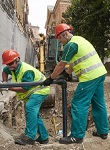
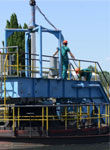
.jpg/5c532605-0938-031b-74ff-89388f7410d3)

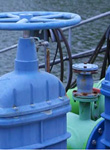
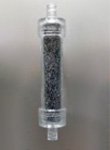
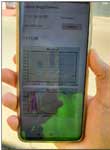


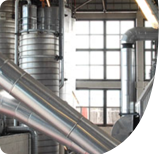
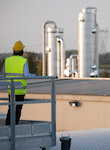
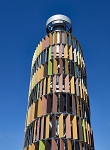
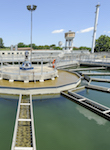


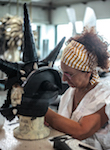

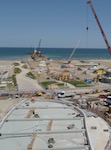
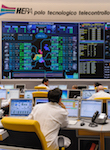
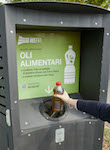
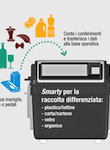

.jpg/468d051b-ba80-83a6-359d-7ef55eefd940)
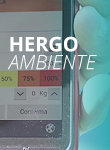
.jpeg/1d0e0770-1094-b22b-fce4-099f27c72978)